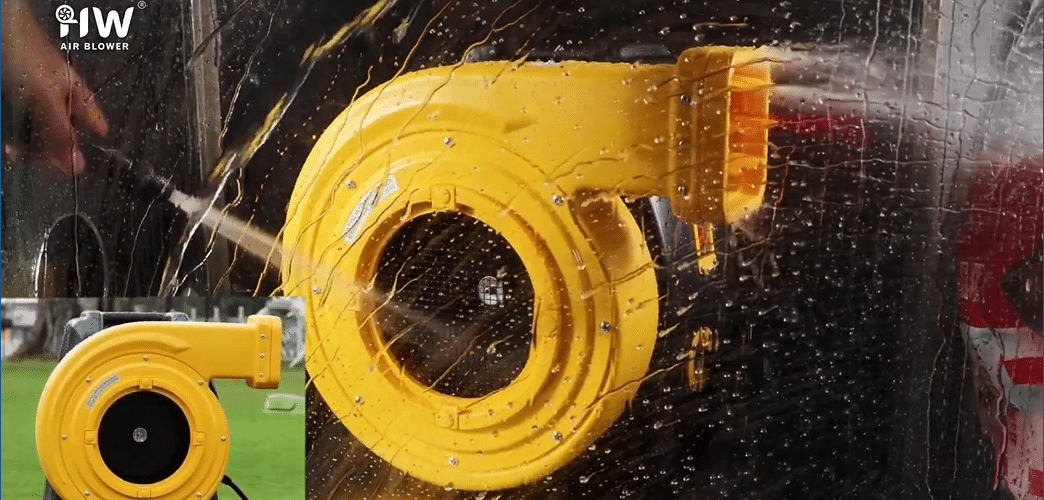
Frequently Asked Questions: How to Use Inflatable Air Blowers Safely
Inflatable air blowers are essential for keeping bounce houses, inflatable slides, and other large inflatables properly inflated during events. However, using these blowers safely is critical to ensure the safety of guests and the longevity of your equipment. Whether you are setting up inflatables for a party or managing a large event in Adelaide, following safety protocols is key. In this blog, we’ll answer some of the most frequently asked questions about how to use inflatable air blowers safely.
1. How Do I Set Up an Inflatable Blower Safely?
Proper setup is the first step in ensuring the safe operation of inflatable air blowers. Follow these guidelines for a secure setup:
- Placement: Always place the blower on a flat, dry surface. This ensures that the blower remains stable during operation and prevents it from tipping over or sliding.
- Securing the Blower: Make sure the blower is securely connected to the inflatable’s air intake. Use zip ties or clamps to ensure the blower’s tube is tightly fastened to the inflatable.
- Distance from Inflatable: Position the blower at a safe distance from the inflatable, ensuring that it has enough space for proper ventilation and airflow.
Proper setup helps prevent accidents and ensures that the inflatable remains securely inflated throughout the event.
2. Can I Use an Extension Cord with My Blower?
Using an extension cord can be necessary for some setups, but it’s important to do so safely. Here are some tips:
- Proper Gauge: Ensure that the extension cord you use is rated for outdoor use and has the appropriate gauge to handle the power requirements of your blower. Typically, a 12-gauge or thicker cord is recommended for air blowers.
- Length: Avoid using an extension cord that is too long, as this can result in power loss and overheating. Try to keep the cord as short as possible while still allowing flexibility in placement.
- Inspect for Damage: Always check the extension cord for any signs of damage or wear before use. A damaged cord can pose a serious electrical hazard.
Using the correct extension cord ensures that your blower operates safely and efficiently.
3. What Are the Electrical Safety Precautions?
Since inflatable blowers are powered by electricity, following electrical safety guidelines is essential:
- Grounded Outlet: Always plug the blower into a grounded outlet to reduce the risk of electric shock. Make sure the outlet is functioning properly and not overloaded with other devices.
- Keep Dry: Ensure that the blower and electrical connections remain dry at all times. Water can create a dangerous hazard, especially when working with outdoor setups. If there is rain, cover the blower with a waterproof tarp or unplug it and move it to a dry area.
- Circuit Protection: Use a blower with built-in circuit protection to prevent electrical overloads. This will automatically shut off the blower in case of overheating or power surges.
By following these precautions, you can reduce the risk of electrical hazards during operation.
4. How Can I Prevent Overheating in the Blower?
Overheating can reduce the lifespan of your blower and cause it to malfunction during an event. Here’s how to avoid overheating:
- Ensure Proper Ventilation: Make sure the blower is placed in an open area with plenty of space for airflow. Blocked vents can lead to overheating.
- Regular Breaks: For long events, consider giving the blower periodic breaks to cool down. Although commercial blowers are designed for continuous use, occasional breaks can help prevent overheating.
- Monitor Temperature: Keep an eye on the blower’s temperature during operation. If it feels excessively hot, turn it off and allow it to cool down before resuming use.
Taking these steps can help extend the lifespan of your blower and ensure consistent performance throughout your event.
5. How Do I Secure the Blower and Inflatable During Operation?
It’s important to secure both the blower and the inflatable to prevent accidents caused by shifting or movement:
- Anchor the Inflatable: Use stakes, sandbags, or water bags to securely anchor the inflatable to the ground. This prevents it from being moved by wind or heavy usage.
- Secure the Blower: Make sure the blower is placed on a stable surface, and use straps or weights to secure it if necessary. A blower that shifts during operation could result in airflow disruptions and unsafe conditions for the inflatable.
- Monitor for Movement: Throughout the event, regularly check that both the inflatable and blower remain securely in place. This helps prevent accidents and ensures the inflatable remains fully inflated.
Securing both the inflatable and blower is crucial for maintaining safety and preventing disruptions during your event.
Conclusion
Using inflatable air blowers safely is key to ensuring successful events and preventing accidents. By following proper setup, electrical safety, and maintenance guidelines, you can ensure that your inflatables remain inflated and secure for the entire duration of your event. Whether you’re hosting a backyard party or managing large events in Adelaide, taking the necessary precautions will help you use your inflatable air blowers safely and efficiently.